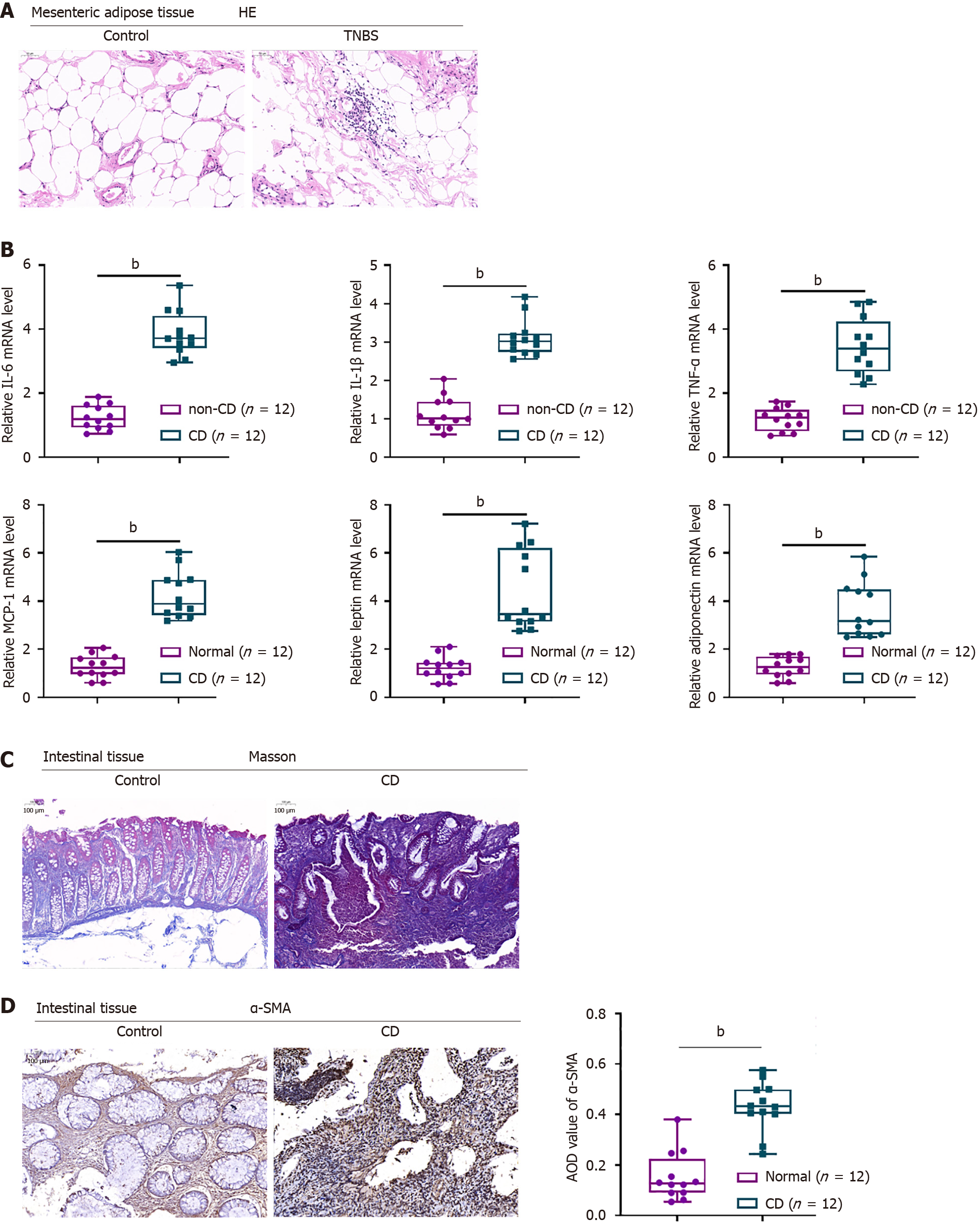Copyright
©The Author(s) 2024.
World J Gastroenterol. Aug 21, 2024; 30(31): 3689-3704
Published online Aug 21, 2024. doi: 10.3748/wjg.v30.i31.3689
Published online Aug 21, 2024. doi: 10.3748/wjg.v30.i31.3689
Figure 1 Histopathological alterations in mesenteric adipose and intestinal tissues of patients with Crohn’s disease.
A: Mesenteric adipose tissues from Crohn’s disease (CD) patients and non-CD subjects stained with hematoxylin-eosin to assess histopathological alterations (× 150); B: Real-time reverse transcriptase-polymerase chain reaction assays of the levels of expression of interleukin-6 (IL-6), IL-1β, tumour necrosis factor alpha, MCP-1, leptin, and adiponectin mRNAs; C: Intestinal tissues from CD patients and non-CD subjects stained with Masson stain to evaluate fibrotic alterations (× 150); D: Immunohistochemical staining of alpha-smooth muscle actin in intestinal tissues from CD patients and non-CD subjects (× 150). Average optical density was quantified using ImageJ software (right panel). n = 12, bP < 0.01 or n = 3, bP < 0.01 by paired t-tests. HE: Hematoxylin and eosin; TNBS: 2,4,6-trinitrobenzene sulfonic acid; CD: Crohn’s disease; TNF-α: Tumour necrosis factor alpha; IL: Interleukin; α-SMA: Alpha-smooth muscle actin; AOD: Average optical density.
- Citation: Wu Q, Yuan LW, Yang LC, Zhang YW, Yao HC, Peng LX, Yao BJ, Jiang ZX. Role of gut microbiota in Crohn’s disease pathogenesis: Insights from fecal microbiota transplantation in mouse model. World J Gastroenterol 2024; 30(31): 3689-3704
- URL: https://www.wjgnet.com/1007-9327/full/v30/i31/3689.htm
- DOI: https://dx.doi.org/10.3748/wjg.v30.i31.3689









